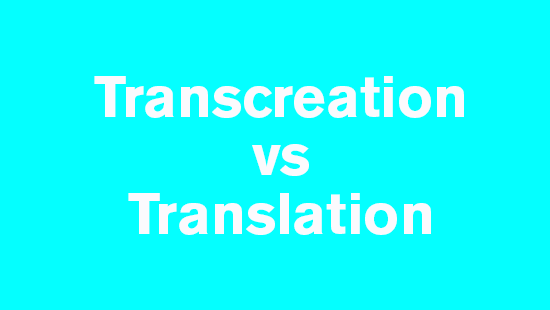Transcreation vs Translation.
How are they different?

Have you ever heard of the Italian expression “Traduttore, traditore”?
It literary means “translator, traitor” or “to translate is to betray”. It serves as a paronomasia (or a pun, to put it simply) to indicate the resemblance between those two words and the effect of accuracy in translation.
This suggests that even the most accurate word-for-word translation can be a “traitor” if the translated words or idioms are not compatible with the linguistic and cultural idiosyncrasies of a target native audience.
Transcreation is used to adapt content into a target native audience, retaining the original emotional appeal.
If you want to appeal to a specific native audience, your content has to be adjusted to their cultural context, while conveying the same emotions as the original version of the message.
That’s when transcreation is necessary. This neologism fuses the words “translation” and “creation”. Usually used by copywriters (sometimes by translators or even a team of both), transcreation goes beyond the mere translation of a word from one language to another.
Transcreation leads to the creation of a new message.
The goal of the creation of an advertising/marketing message is not simply to inform an audience. Through images and copy, the goal is to capture people’s attention, trigger their emotions, and persuade them to do something. Even though emotions are universal, signs (visual and textual) differ from one culture to another.
So, a copywriter knowledgeable of the language and culture of a target native audience deconstructs the original imagery of the brief, inserts their own creativity, rewrites, and shifts aspects of the copy to make it resonate with the cultural and linguistic semantics of the target native audience.
Transcreation requires a creative brief.
Conversely to translation which takes place with a source text, transcreation needs a creative brief that describes the creative idea and the desired outcome in order to make the appropriate adjustments of the original brief to the context of the target native audience.
Also, translation is perfectly suitable for content whose goal is merely to inform an audience. For instance, one of my services is the translation of academic research papers from French to English, respecting the tone of voice and style of writing of the original text. Of course, a few adjustments are necessary—changing idioms—to fit with the English grammar rules and syntax.
Transcreation is used for marketing purposes.
But when the purpose of the content surpasses the informational level and demands an action from the reader, then transcreation is a better fit.
To Recap,
Translation is concerned with word-for-word accurate interpretation of a word from one language to another, whereas the purpose of transcreation is to recreate and adjust a marketing/advertising content message to the linguistic and cultural features of a target native audience. Translation requires a source text, while transcreation relies on a brief to come up with a new adapted message. Finally, the purpose of translation is informative, while transcreation functions in a marketing context.
Need some examples?
Nutella International
Spread the happy
Nutella French-speaking countries
Chaque jour c’est du bonheur à tartiner
McDonald’s International
I’m loving it
McDonald’s French-speaking countries
C’est tout ce que j’aime
Ferrero Rocher International
Share the magic
Ferrero Rocher France
Créateur de magie
